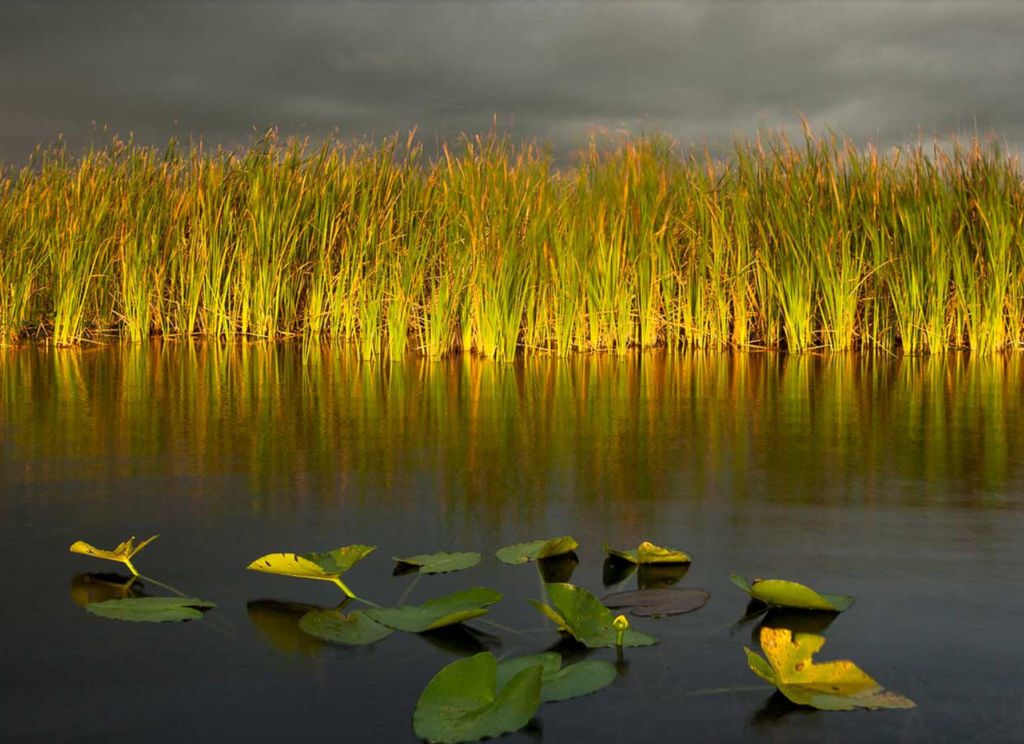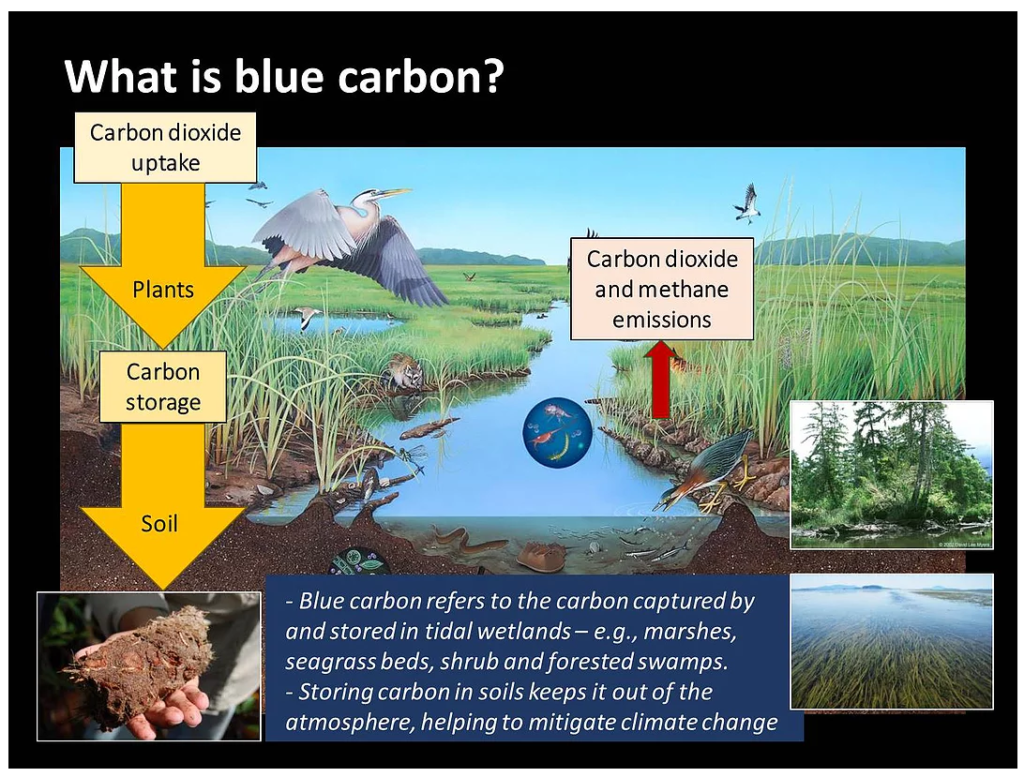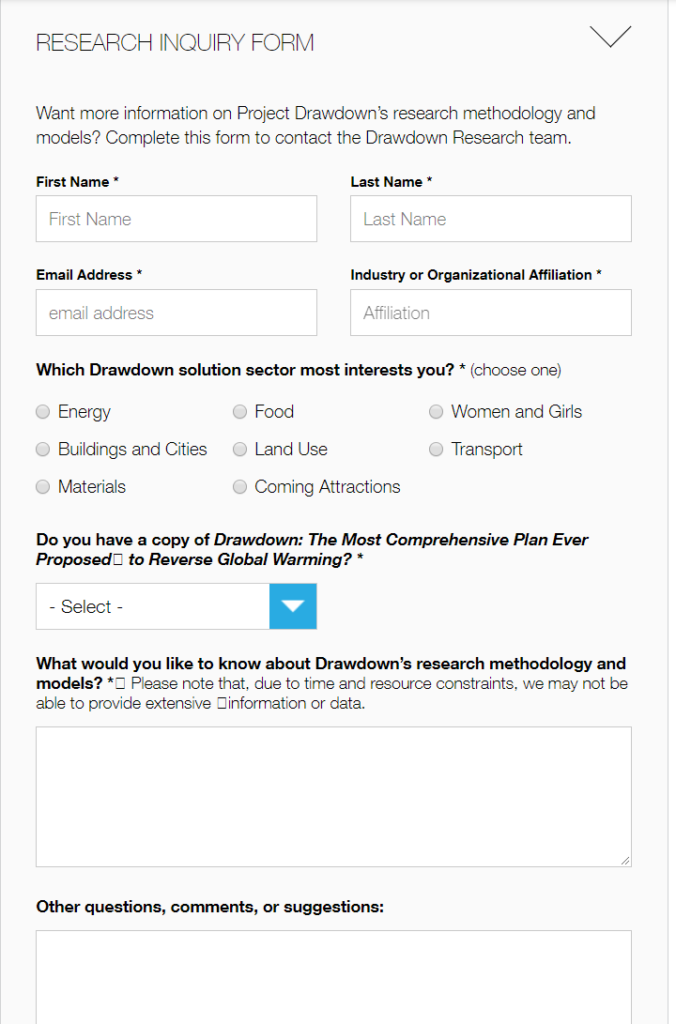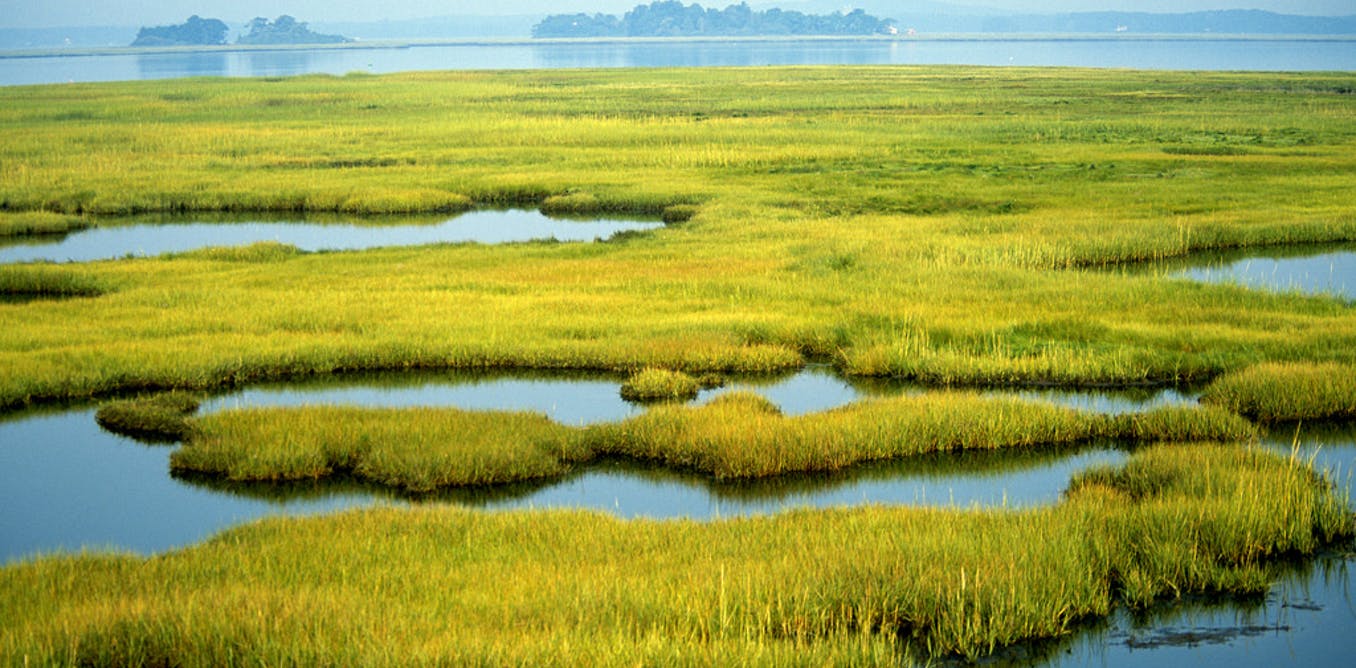This is the sixth in an ongoing series illustrating the relationship of Drawdown strategies to landscape architecture. For context, read the initial post here.
There are a number of solutions mentioned in Drawdown that interface with the natural environment, and in doing so have a direct interface to landscape architecture. Coastal Wetlands are an important tool in both mitigation through their capture and sequestration of greenhouse gas emissions. The Drawdown focus is on the former, so this #52 ranked solution can reduce CO2 by 3.19 gigatons by 2050, and more importantly, protect 53.34 gigatons of CO2 along the same timeline.
This is an interesting distinction between active reduction of CO2 by employing new strategies (i.e. restoration and creation of coastal wetlands), of which is more of a planning and design strategy, as opposed to protection of many of these existing ecosystems, which are already in place, performing vital ecosystem services. In this case, the gains by employing ‘legal’ protection of already existing landscapes is more driven by policy than design, so that much be in context. For instance, as mentioned on the website, there are 49 million hectares (121 million acres) of coastal wetlands around the world, and only a small fraction of these, around 7 million hectares (17 million acres), or around 14% is currently protected.

The performance of coastal wetlands is immense. As mentioned on the Drawdown site:
” Coastal wetlands can store five times as much carbon as tropical forests over the long term, mostly in deep wetland soils. The soil of mangrove forests alone may hold the equivalent of more than two years of global emissions—22 billion tons of carbon, much of which would escape if these ecosystems were lost. “
In specific terms, the performance for specific wetland types varies in the tons of carbon sequestered per hectare per year, from mangroves (1.7 tons), salt marshes (1.8 tons), and sea grass (1.1 tons). These result when these are degraded is notable, with emissions per hectare per years of degraded/deforested mangroves jumping to 31.3 tons, while degraded salt marshes and sea grass beds emitting 9.8 tons and 5.9 tons respectively. This is a lesson with most existing landscape systems, and why ‘land use’ is key, as the transformation doesn’t just remove sequestration potential as sinks, it amplifies and speeds up emissions to become sources, contributing more CO2 to the atmosphere at alarming rates.
An interesting concept emerges here as well, that of ‘blue carbon’, which is a term that refers to that massive storage of carbon in these ecosystems (mangroves, seagrass meadows and salt marshes). Regionally the PNW Blue Carbon Working Group , “…a collaborative group of scientists, restoration practitioners, conservation leaders, land managers, policy experts, carbon finance experts, and funding program leaders committed to developing coastal blue carbon in the Pacific Northwest as a conservation and management tool to help mitigate the effects of climate change.” Their background gives a nice regional introduction to blue carbon, and includes this graphic showing the system flows.

I’m curious the role of inland wetlands in climate change, and how these perform for climate change, as there are a number of projects that focus on designs to enhance and restore existing wetlands as parts of river systems, or lowlands, or to create new constructed wetlands that are a key part of green infrastructure strategies for stormwater management and flood projection. On that note, it is not to be forgotten that wetlands are also key to adaptation, with tons of data on how they help to boost resilience through buffering impacts from storms, reducing flooding, while providing habitat, recreation, and a range of other ecosystem services beyond sequestration. More on that later.
This brings up an opportunity to highlight a few additional items featured on the website, including a list of References by topic, along with an extensive Technical Summary which also includes links for each strategy to a longer bibliography of technical information, such as this one for the Coastal Wetlands . Also, because this is a continually evolving topics with new information, there is also a place for Errata & Updates to keep the data alive and current. If that’s not enough, you can always request more research or ask questions via the Research Inquiry Form., a snip of which is found below.

HEADER: Coastal Wetlands – image via Phys.org
